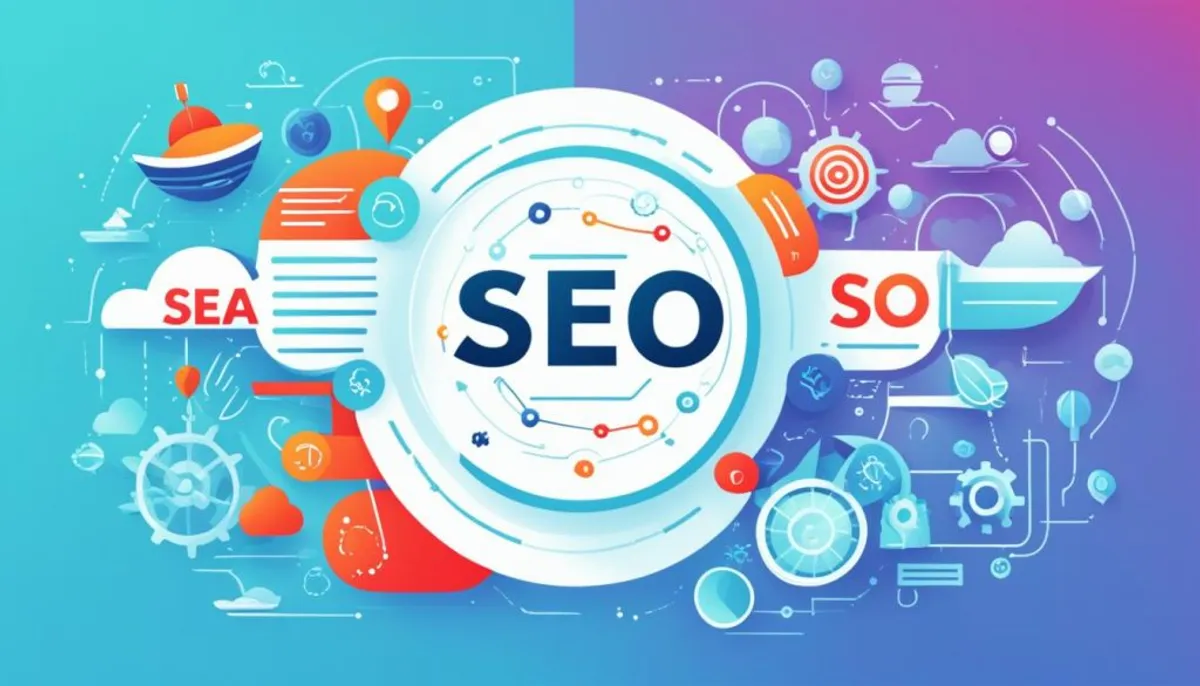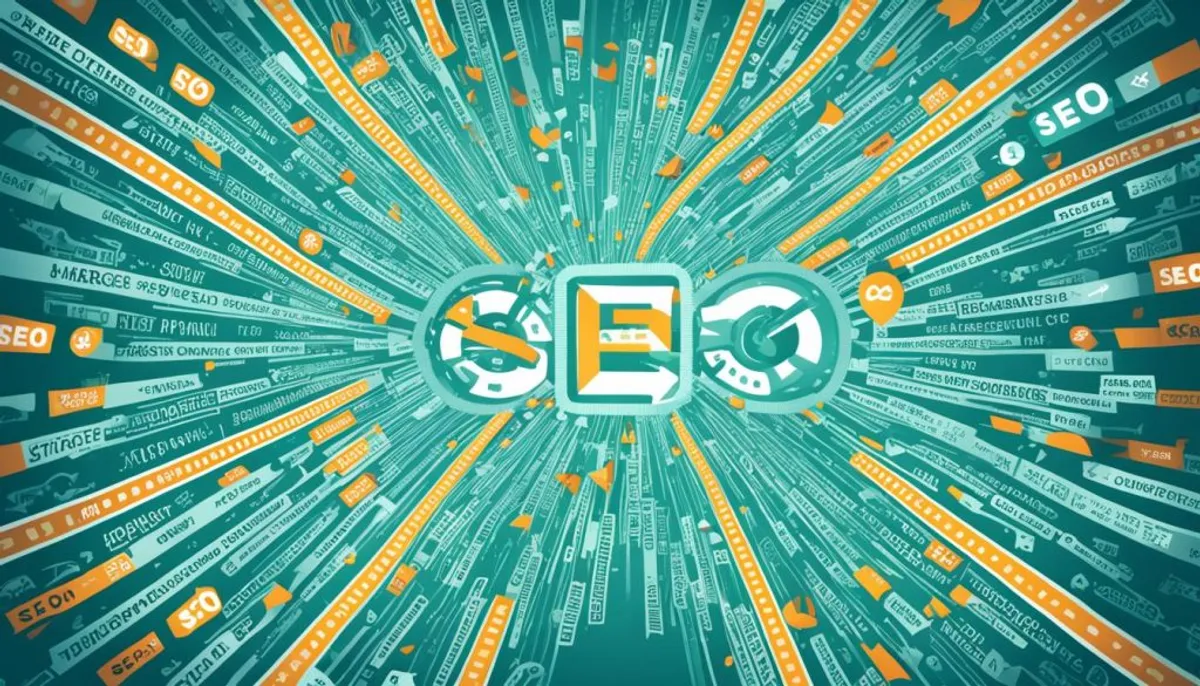When it comes to digital marketing, two terms that are often mentioned are SEO and SEA. SEO, or Search Engine Optimization, involves activities aimed at improving a website’s organic search engine rankings. On the other hand, SEA, or Search Engine Advertising, refers to the process of paying for advertisements to appear on search engine results pages. In this article, we will delve into the key differences between SEO and SEA to help you make an informed decision for your business.

Key Takeaways:
- SEO, or Search Engine Optimization, focuses on improving organic search engine rankings.
- SEA, or Search Engine Advertising, involves paying for ads to appear on search engine results pages.
- SEO is a long-term strategy that drives organic traffic, while SEA provides immediate visibility through paid advertisements.
- Both SEO and SEA have their own unique advantages and can complement each other when integrated strategically.
- The choice between SEO and SEA depends on your specific business needs, goals, budget, and timeframe.
Understanding SEO
Search Engine Optimization (SEO) is a vital digital marketing strategy that focuses on optimizing a website to improve its visibility in organic search results. By employing various seo strategies, website owners can enhance their chances of ranking higher in search engine result pages (SERPs).
One crucial aspect of SEO is optimizing website content to ensure it aligns with relevant keywords and search queries. By creating high-quality, informative, and engaging content, website owners can attract both search engine crawlers and human users, resulting in increased organic traffic.
Another key factor in SEO is improving the website’s technical aspects. This includes optimizing site speed, ensuring mobile responsiveness, and enhancing user experience. By providing a seamless browsing experience, websites can earn higher rankings and retain visitors.
Building high-quality backlinks is also a fundamental aspect of effective SEO. Backlinks are external links from other reputable websites that point back to your site. The more authoritative and relevant these backlinks are, the higher the website’s credibility and search engine rankings.
The seo benefits of a well-executed SEO strategy are immense. By driving organic traffic to a website, businesses can increase their brand visibility and reach a broader audience. Higher website rankings also establish credibility and trust among users, leading to potential business growth and increased conversions.
To give you a clear understanding of SEO’s importance, here is a visual representation of its key components:
| Components of SEO | Description |
|---|---|
| Website Content Optimization | Creating high-quality content with relevant keywords to attract search engine crawlers and users. |
| Technical SEO | Optimizing the website’s technical aspects, such as site speed, mobile responsiveness, and user experience. |
| Link Building | Building high-quality backlinks from other authoritative websites to improve credibility and search engine rankings. |
In summary, search engine optimization is critical for businesses and website owners looking to improve their organic search visibility and drive sustainable organic traffic. By implementing effective SEO strategies and focusing on the key components discussed above, businesses can enhance their online presence and maximize their digital marketing efforts.
Understanding SEA
Search Engine Advertising (SEA) is a powerful tool for businesses looking to increase their online visibility and reach a targeted audience. With SEA, businesses can display ads on search engine results pages by bidding on specific keywords. Each time a user clicks on the ad, the advertiser pays a certain amount, making it a cost-effective way to drive traffic to a website.
One of the key advantages of SEA is its ability to provide immediate results. Unlike search engine optimization (SEO), which takes time to drive organic traffic, SEA allows businesses to quickly appear in search results and start generating leads and conversions. This is particularly beneficial for new businesses or those looking to promote a specific product or service.
SEA also offers precise targeting options, enabling advertisers to reach their desired audience based on keywords, locations, and demographics. This level of control ensures that businesses are targeting the right users at the right time, maximizing the chances of converting leads into customers.
SEA allows businesses to have immediate visibility in search results and target specific keywords, locations, and audiences.
Moreover, SEA provides businesses with the ability to control their ad spend. Advertisers can set daily or monthly budgets to ensure that their advertising costs align with their overall marketing strategy. This level of flexibility enables businesses to optimize their campaigns and maximize their return on investment.
In conclusion, SEA is a valuable advertising tactic that offers quick results, precise targeting, and cost control. By incorporating SEA into their digital marketing strategy, businesses can enhance their online presence, attract a targeted audience, and achieve their marketing goals.
SEA vs. SEO Comparison
| SEA | SEO |
|---|---|
| Immediate results | Long-term strategy |
| Paid advertising | Organic rankings |
| Precise targeting options | Broader reach |
| Controlled ad spend | Free organic traffic |

SEO vs SEA: Key Differences
When comparing SEO (Search Engine Optimization) and SEA (Search Engine Advertising), it is important to understand the key differences between the two strategies. These differences have a significant impact on how businesses generate traffic and achieve visibility in search engine results pages (SERPs).
Difference in Traffic Generation
One of the major distinctions between SEO and SEA is how traffic is generated. SEO focuses on driving organic traffic by optimizing websites to improve their search engine rankings. This involves implementing various strategies such as optimizing website content, improving technical aspects, and building high-quality backlinks. On the other hand, SEA involves running paid advertisements that appear in search results, targeting specific keywords, locations, and audiences. With SEA, businesses pay for each click their ad receives, which drives traffic to their websites.
Time to See Results
Another important difference between SEO and SEA is the time it takes to see results. SEO is a long-term strategy that requires consistent effort and patience. It can take several months to see significant improvements in organic search engine rankings and traffic. On the other hand, SEA provides immediate visibility and can generate traffic as soon as the ad campaign is launched. This makes SEA a more suitable option for businesses that need quick results and want to increase their online presence rapidly.
Sustainability and Investment
SEO is a sustainable long-term strategy that can provide ongoing benefits. Once a website achieves higher organic rankings, it is more likely to maintain its visibility in search results, even with minimal ongoing efforts. However, SEO requires continuous investment in terms of time and resources to maintain and improve rankings in a highly competitive online landscape. On the other hand, SEA requires ongoing financial investment to sustain visibility since it relies on paid advertising. This ongoing expenditure is necessary to ensure consistent traffic and exposure.
It is important for businesses to consider these key differences in order to make an informed decision about which strategy to prioritize. While SEO offers long-term sustainability, higher organic rankings, and cost-effective organic traffic, SEA provides immediate visibility and targeted traffic through paid advertising. Businesses may also choose to integrate both SEO and SEA, leveraging the benefits of each strategy to maximize online visibility, generate traffic, and achieve marketing goals.
| SEO | SEA |
|---|---|
| Focuses on driving organic traffic | Relies on paid advertisements |
| Takes time to see significant results | Provides immediate visibility |
| Long-term and sustainable strategy | Requires ongoing financial investment |
Benefits of SEO
Implementing effective SEO strategies can bring numerous advantages and benefits to businesses. Let’s take a closer look at some of the key benefits of SEO:
- Increased Organic Traffic and Brand Visibility: SEO helps improve website rankings, making it more visible to potential customers. As a result, businesses can attract more organic traffic and increase brand visibility.
- Enhanced Credibility and Trust: Websites that rank higher in search engine results are often seen as more reputable and trustworthy. By implementing SEO techniques, businesses can build credibility and trust among their target audience.
- Cost-Effectiveness: Unlike Search Engine Advertising (SEA), SEO doesn’t involve paying fees per click. This makes SEO traffic more cost-effective in the long run, allowing businesses to maximize their return on investment.
- Long-Term Results and Sustainability: A well-executed SEO strategy can provide long-term results and sustainability. By consistently optimizing their websites, businesses can maintain and improve their search engine rankings over time.
“SEO is like a long-term investment that pays dividends in the form of increased website visibility and organic traffic.” – Marketing Expert
By leveraging SEO strategies, businesses can harness the power of organic search and reap its many benefits.
Advantages of SEA
When it comes to digital marketing, Search Engine Advertising (SEA) offers several advantages that can greatly benefit businesses. Let’s explore some of the key advantages of SEA:
Immediate Visibility
One significant advantage of SEA is the ability to achieve immediate visibility in search results. By leveraging paid advertisements, businesses can quickly drive traffic to their websites and increase brand exposure. This is particularly useful when launching new products or promotions that require instant attention.
Precise Targeting
SEA provides businesses with precise targeting options. Advertisers can show ads to specific audiences based on keywords, locations, devices, demographics, and more. This level of targeting ensures that businesses reach the right people at the right time, increasing the likelihood of conversions and maximizing the return on investment.
Valuable Insights and Data
Another advantage of SEA is the wealth of insights and data it offers. Businesses can track conversions, analyze keyword performance, measure click-through rates, and gain valuable information about their target audience. This data-driven approach enables businesses to make informed decisions and optimize their marketing strategies for better results.
Overall, SEA provides businesses with immediate visibility, precise targeting, and valuable insights and data. By incorporating SEA into their digital marketing strategy, businesses can effectively reach their desired audience, drive traffic to their websites, and boost brand awareness. Now let’s take a look at how SEO and SEA can be integrated to maximize marketing efforts.
Integrating SEO and SEA
While SEO and SEA have their own unique advantages, they can also complement each other when integrated strategically. By combining SEO strategies and SEA tactics, businesses can achieve both short-term and long-term marketing goals.
For example, keyword insights from SEA campaigns can inform SEO strategies, allowing businesses to optimize their websites for highly relevant terms and phrases. On the other hand, successful SEO tactics can be tested through SEA campaigns, providing valuable data on which keywords and messaging resonates with the target audience.
The key to successful integration is to align both strategies to maximize visibility, traffic, and conversions. This can be achieved by:
- Using SEA to supplement SEO efforts for immediate visibility while organic rankings improve
- Identifying high-performing keywords from SEA campaigns and incorporating them into SEO strategies
- Testing the effectiveness of different SEO tactics through targeted SEA campaigns
- Using data from both SEO and SEA to refine and optimize marketing strategies
By integrating SEO and SEA, businesses can take advantage of the strengths of each strategy to create a comprehensive and effective digital marketing approach.

| SEO Strategies | SEA Tactics |
|---|---|
| Optimizing website content with relevant keywords and meta tags | Bidding on keywords to display targeted ads in search results |
| Building high-quality backlinks to improve website authority | Creating compelling ad copy to attract clicks |
| Improving website performance and user experience | Utilizing ad extensions to provide additional information |
Making the Right Choice
When it comes to choosing between SEO and SEA, it’s crucial to assess your business goals, budget, and timeframe. The decision between the two strategies can significantly impact your online marketing success.
If you are seeking sustainable, long-term growth and are willing to invest time and effort in enhancing your website’s visibility, SEO may be the better option for you. With SEO strategies, you can optimize your website’s content, improve technical aspects, and build high-quality backlinks, all aimed at achieving higher organic search engine rankings. While it may take several months to see significant improvements, the benefits of SEO, such as increased brand visibility and potential business growth, make it an effective long-term strategy.
On the other hand, if you require immediate visibility and have a flexible budget, SEA can provide quick results. Through search engine advertising tactics, such as bidding on specific keywords and paying for each click, you can secure a prominent position in search engine results pages. This ability to instantly drive traffic to your website and target specific demographics can be advantageous for businesses with time-sensitive marketing goals.
However, in many cases, a balanced approach that combines both SEO and SEA is ideal for a comprehensive online marketing strategy. By integrating these strategies, you can enjoy the long-term sustainability of SEO and the immediate visibility of SEA. For example, keyword insights gained from SEA campaigns can inform your SEO strategies, while successful SEO tactics can be tested through SEA campaigns.
To summarize, the choice between SEO and SEA depends on your unique business needs and goals. By carefully evaluating your budget, timeframe, and desired outcomes, you can make an informed decision to create an effective digital marketing strategy that maximizes the benefits of both SEO and SEA.
Key Takeaways:
- Consider your business goals, budget, and timeframe when deciding between SEO and SEA.
- SEO is a long-term, sustainable strategy that focuses on organic search engine rankings.
- SEA provides instant visibility through paid advertisements on search engine results pages.
- A combination of SEO and SEA can maximize traffic, visibility, and conversions.
Conclusion
In conclusion, when it comes to digital marketing strategies, the choice between SEO and SEA depends on your specific business needs and goals. Both SEO and SEA offer unique advantages that can help drive traffic and increase online visibility.
With SEO, you can benefit from long-term sustainability and organic traffic, leveraging various SEO strategies to improve your website’s visibility in search engine results.
On the other hand, SEA provides immediate visibility and precise targeting options through paid advertisements, allowing you to utilize effective SEA tactics to reach your target audience quickly.
By integrating both SEO and SEA in your digital marketing strategy, you can maximize your online presence, attract more visitors, and drive quality traffic to your website. Evaluate your budget, timeframe, and desired outcomes to make an informed decision that aligns with your business objectives.
FAQ
What is SEO?
SEO, or Search Engine Optimization, involves activities aimed at improving a website’s organic search engine rankings. It focuses on optimizing a website to increase its chances of ranking higher in search engine result pages (SERPs).
What is SEA?
SEA, or Search Engine Advertising, refers to the process of paying for advertisements to appear on search engine results pages. It involves bidding on specific keywords and paying for each click the ad receives.
What are the key differences between SEO and SEA?
SEO drives organic traffic through improved search engine rankings, while SEA drives traffic through paid advertisements. SEO takes time to show significant improvements, while SEA provides immediate visibility. SEO is a long-term strategy, while SEA requires ongoing investment to maintain visibility.
What are the benefits of SEO?
SEO can lead to increased organic traffic and brand visibility, build credibility and trust, and provide long-term results.
What are the advantages of SEA?
SEA offers immediate visibility in search results, precise targeting options, and valuable insights and data for future marketing strategies.
How can SEO and SEA be integrated?
By combining SEO and SEA tactics, businesses can achieve both short-term and long-term marketing goals. Insights from SEA campaigns can inform SEO strategies, and successful SEO tactics can be tested through SEA campaigns.
How do I make the right choice between SEO and SEA?
Consider your business goals, budget, and timeframe. For sustainable growth and long-term results, SEO may be the better option. If you need immediate visibility and have a flexible budget, SEA can deliver quick results. Often, a combination of both is recommended.
Source Links
RelatedRelated articles



